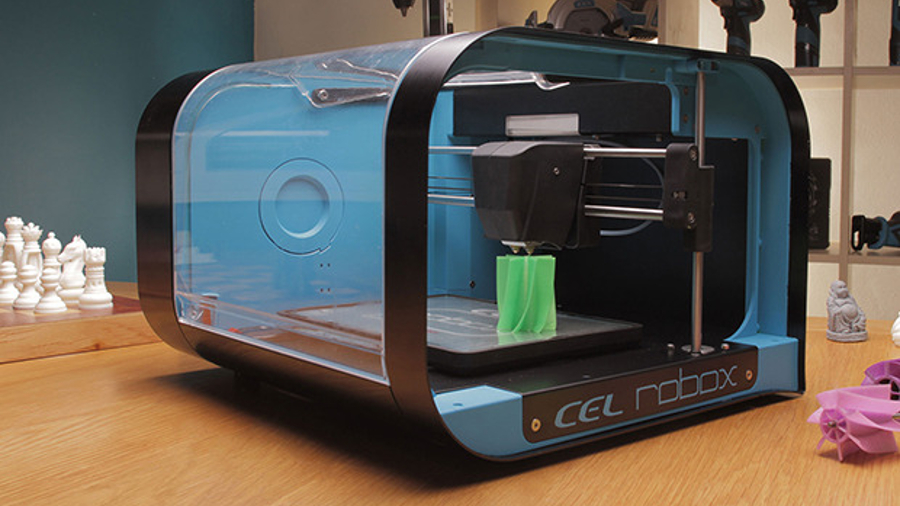'Our dream is to see a Robox in every school, office and home worldwide'
3D printer uses 'Plug and Print' technology

Another day, another 3D printer company cracks open the champagne after reaching a dizzying Kickstarter funding goal. This time it's UK-based CEL (based in Portishead), which has seen its Robox 3D printer rack up an impressive £100,000 (around U$163,290 or AU$179,429) to surpass its target in just eight days.
We recently wrote that CEL is aiming for Apple-like simplicity with the Robox, and it seems that the 3D printer's 'Plug and Print' ethos is appealing to a wide range of creative types. Achieving its funding targets means that the company can ship the first Roboxes to backers in March 2014.
We caught up with CEL's founder Chris Elsworthy to discover more about the company and its creation.
The company
TechRadar Pro: Can you give us some background on CEL and why buyers should feel confident backing the Robox?
Chris Elsworthy: CEL is a product development company based in Portishead near Bristol, we also have offices in Hong Kong and China. As a company we are massively passionate about designing and making things and we have already seen a lot of success from our first major product – the POWER8 workshop.
We now have over 15,000 POWER8s in use worldwide, and have a proven history of bringing high-quality, hard-wearing and innovative products to market, with excellent after sales customer service. This tool was featured on Dragon's Den and received a lot of positive feedback and media attention. We hope this will increase buyer's confidence in our brand and make sure they believe we can deliver what we say we will.
Kickstarter campaign
TR: Why did you choose Kickstarter to launch the product? And congratulations on reaching your funding target.
Are you a pro? Subscribe to our newsletter
Sign up to the TechRadar Pro newsletter to get all the top news, opinion, features and guidance your business needs to succeed!
CE: Crowd funding seemed like an excellent choice for us as a company, allowing us to get in touch and start dialogue with our future customer base whilst raising money for development at the same time.
As Kickstarter is the largest platform internationally, it seemed like an excellent place to go. By having direct interaction with our beta test group, we can ensure that the product we release to market is fully realised and tested by a range of potential users and early adopters. We're not looking for only experts and geeks – we want everyone to get involved.
Things have gone extremely well for us! We hit our target of £100,000 yesterday with 22 days still to go! Without sounding big-headed, we know our product is good, we've been using 3D printers for years and watching the market closely and there isn't much that comes close on spec and for half of the cost of our closest competitor.

Robox ready
TR: With a 3D printing 'boom' imminent, how does Robox stand out from competing products on a technical level?
CE: First and foremost, Robox is the first 3D printer where the user is able to just "plug and print". Unlike other printers on the market, no prior assembly is required and is it perfect for home use. It's packed full of technical innovations meaning that it holds its own in the commercial environment as well in the home.
Robox has been designed to be the very best 3D printer – simple, accessible and reliable to everyone at home and in any workspace. It has a unique dual nozzle system meaning that it can produce not only higher quality but faster prints.
Robox also has a whole range of features which separate us from our competitors – namely a dual nozzle system, automatic bed leveling, a 'tapless' PEI build surface', automatic material recognition and a quick-change print head.
Print and go
TR: Is the Robox more geared toward consumers or small business owners?
CE: While we hope that Robox is geared towards everyone, we have simplified the process of printing as much as we can, removing the technical barrier for home users.

Could this be Lenovo's first NAS? A proof of concept for network-attached storage has emerged, featuring two Type-C connectors and a dedicated Ethernet port

The rise of RISC: 2025 will be the year of the first quasi-mainstream RISC-V laptop as confirmed by the CEO of Framework but I don't think it will be ready for primetime
Most Popular


